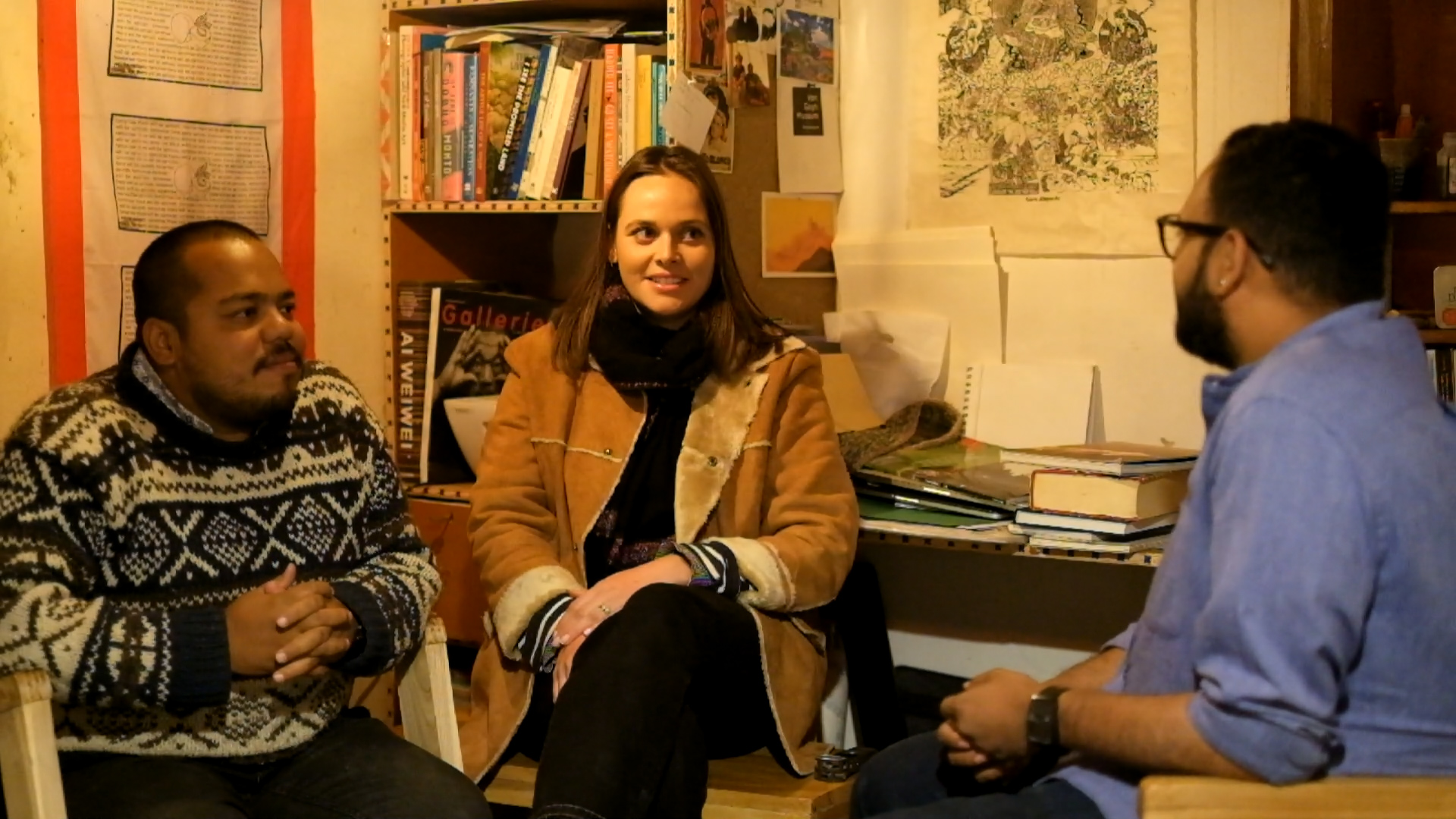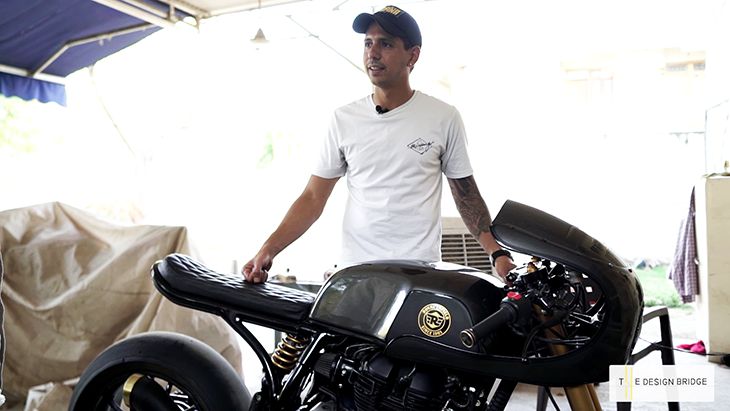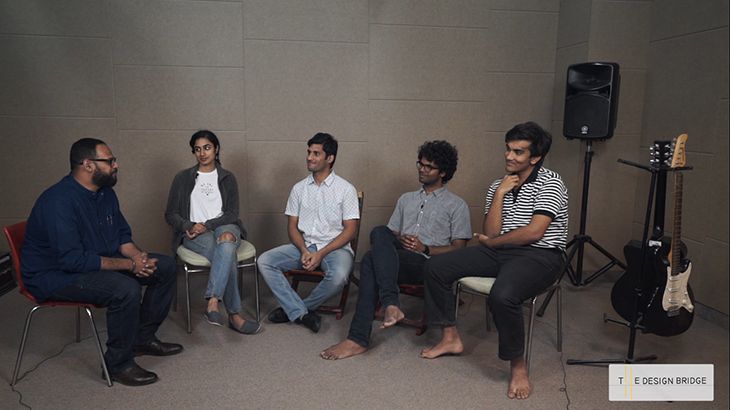- Climatology is the scientific study of climate, and the factors that affect it.
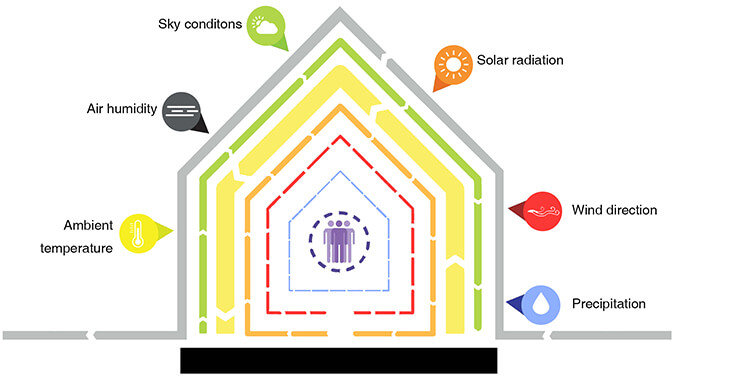
Why there is a need to study Climatology?
- To determine the climatic patterns of a particular region for functional building design.
Climate Zone
- According to BIS, India can be broadly classified into five regions with distinct climates:
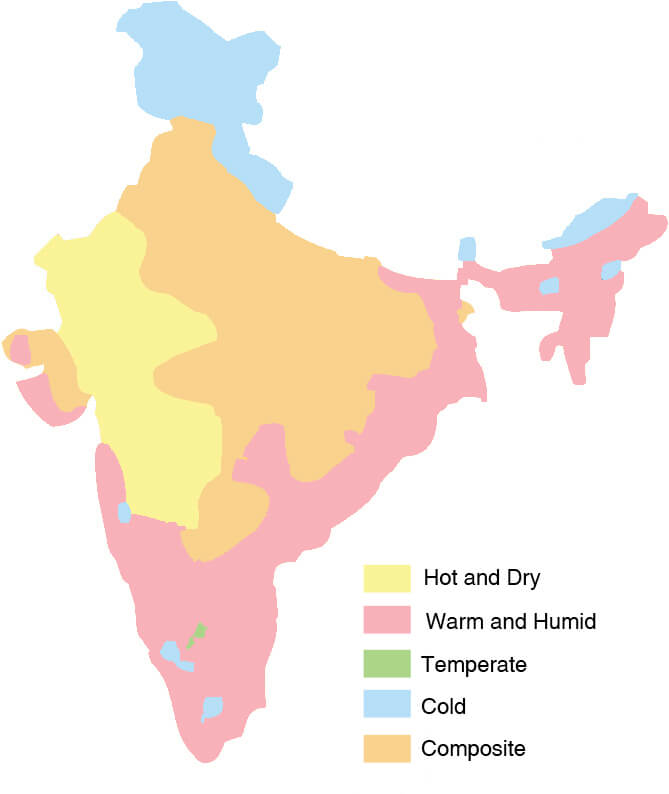
Classification of Climates
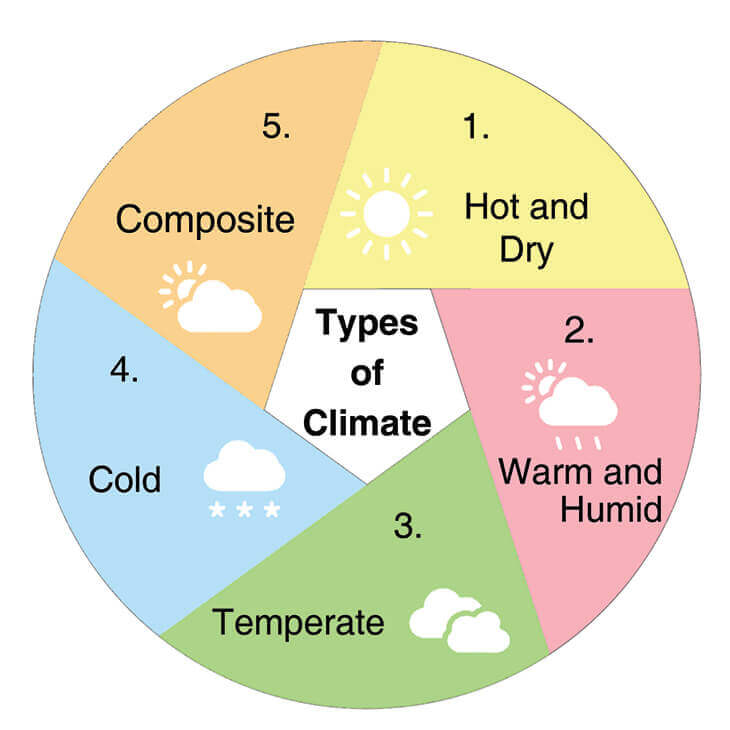
Characteristics of Different Climate Zones
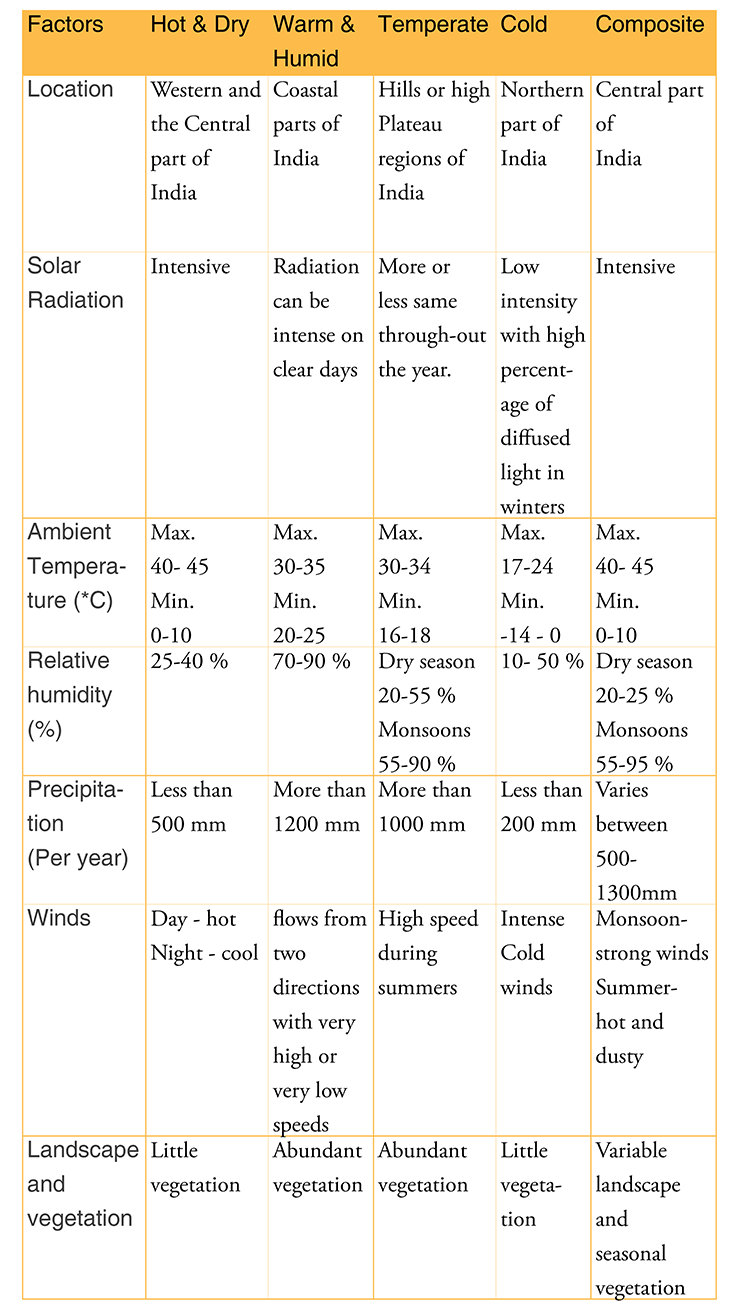
Building Design Factors affected by Climate Change
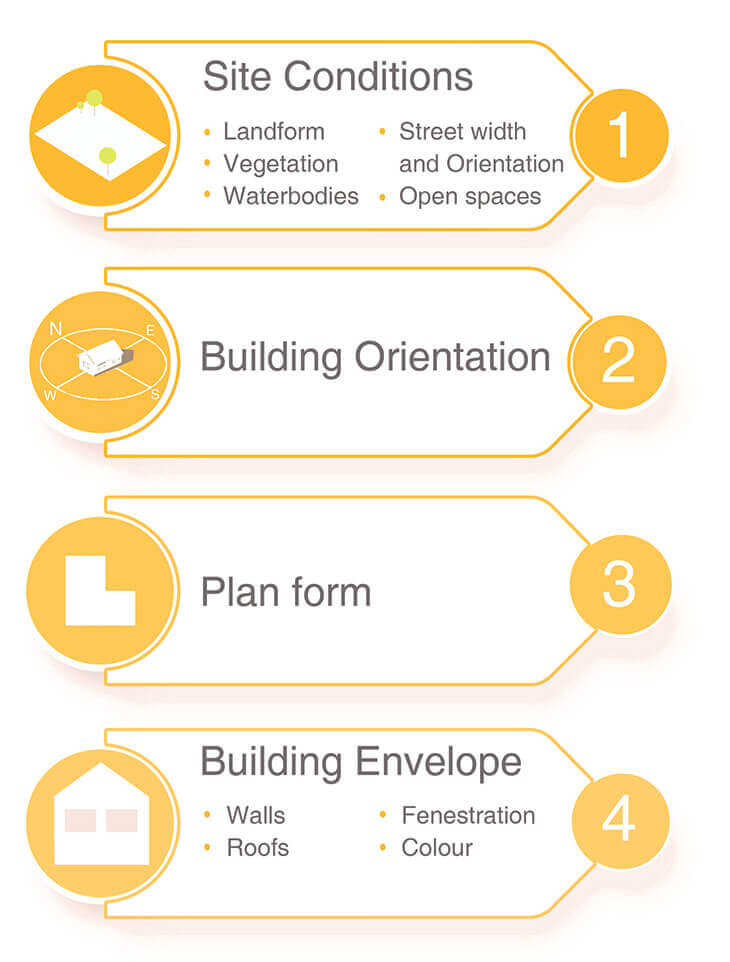
Design Considerations for a Climate Zone
A. Building Orientation
1. Hot and Dry Climate
- An East-West orientation is preferred.
- Orient Building long faces along North- South axis.
- Smaller walls from East to West facade to reduce heat gain.

2. Warm and Humid Climate
- Building should be located on wind direction to take advantage of cool breeze.

3. Temperate Climate
- North and South facade should receive least amount of radiation.
- Landform Building the structure on the windward slopes is preferable for getting cool breeze.

4. Cold Climate
- Building should be located on the South slope of a hill or mountain for better access to solar radiation.
- Exposure to cold winds can be minimized by locating the buildings on the leeward side.

5. Composite Climate
- Building should be located preferably in North-East and South-West direction.
- This helps in receiving less radiations and more natural light & ventilation.

B. Plan Form
1. Hot and Dry Climate
- The building must be compact.
- Smaller surface (s) to Volume (v) ratio to reduce heat loss.

2. Warm and Humid Climate
- The building could be long and narrow to allow cross ventilation.
- Elongated plans for maximum cross ventilation.
- The surface finish should be protected from the effects of moisture.

3. Temperate Climate
- The building plan should be reasonably compact.
- It would reduce heat gain during the day and heat loss during the night.

4. Cold Climate
- The building must be compact with small surfaces to volume ratios.

5. Composite Climate
- The building must be compact and low rise.
- Buildings with courtyard are more suitable.

C. Building Envelopes: Walls
1. Hot and Dry Climate
- Heat storing material is more preferable.
- Double wall construction with insulation in between resist direct heat.
- East and West walls should preferably be shaded.

2. Warm and Humid Climate
- The walls must be designed to promote air flow, to counter the prevalent humidity
- Baffle walls, both inside and outside the building can help to divert the flow of wind inside

3. Temperate Climate
- East and especially the West walls should also be massive.
- North and South walls will not receive much radiation and they may be of a lightweight construction.

4. Cold Climate
- The walls should be insulated.
- The South facing walls (exposed to solar radiation) could be of thermal capacity (such as Trombe wall) to store day time heat for later use.

5. Composite Climate
- Solid masonry or concrete wall.
- Insulated walls are preferable.

C. Building Envelopes: Roofs
1. Hot and Dry Climate
- Flat roofs or vaulted roofs are ideal in this climate.
- Roofs should be made higher so that radiations from ceiling are less harsh.
- Light colored or totally white terrace surface will reduce effect of hot solar radiations.

2. Warm and Humid Climate
- The form of roof should be planned to promote air flow and provide shelter from rain and heat.
- Double roof with vents at the rooftop effectively induce ventilation and draw hot air out.
- Sloped roofs are suitable for this region.

3. Temperate Climate
- Insulated with reflective material to reflect heat and retain warmth.

4. Cold Climate
- A sufficiently sloping roof enables quick drainage of rainwater & snow.
- Skylights with shutters on the roof admits heat as well as lights in winter

5. Composite Climate
- It should be of Solid masonry or concrete.
- Insulated roof is preferred.
- Roof pond system can be used as insulator.

C. Building Envelopes: Fenestration
1. Hot and Dry Climate
- More windows should be provided on the North facade of as it receives lesser radiation throughout the year.
- All openings should be protected from the sun by using external shading devices such as chhajjas and fins.

2. Warm and Humid Climate
- Smaller windows can be placed on the windward side.
- The corresponding openings on the other sides should be bigger for facilitating a plume effect for natural ventilation.

3. Temperate Climate
- Windows can be larger in the North, while those on the East, West and South should be smaller.
- Maximize daytime cooling with high level vents/windows to let out the hot air and draw in cool air.

4. Cold Climate
- It is advisable to have maximum window area on the Southern side of the building to facilitate heat gain.
- Sealed and double glazed windows to avoid heat loss.

5. Composite Climate
- Large openings (preferable with solid shutters in opposite walls are suitable which helps in cross ventilation.
- Recessed windows to reduce external solar heat gains.
- Two small openings, One at high level and one at low level.

C. Building Envelope: Colour and Texture
1. Hot and Dry Climate
- Darker shades should be avoided for surfaces exposed to direct solar radiation.
- Light colored / Shiny reflective surfaces should be used to reflect solar heat.
- Avoid hard paved surfaces as these may create glare and radiate heat inside the building.

2. Warm and Humid Climate
- The walls should be painted with light pastel shades or white washed.
- The surface of roof can be of broken glazed tile to reflect sunlight back.

3. Temperate Climate
- Pale colours are preferable; dark colours may be used only in recessed places protected from the summer sun.
4. Cold Climate
- The external surfaces should be dark in colour so that they absorb heat from sun.
5. Composite Climate
- The external surfaces should be painted in medium tone colours.




